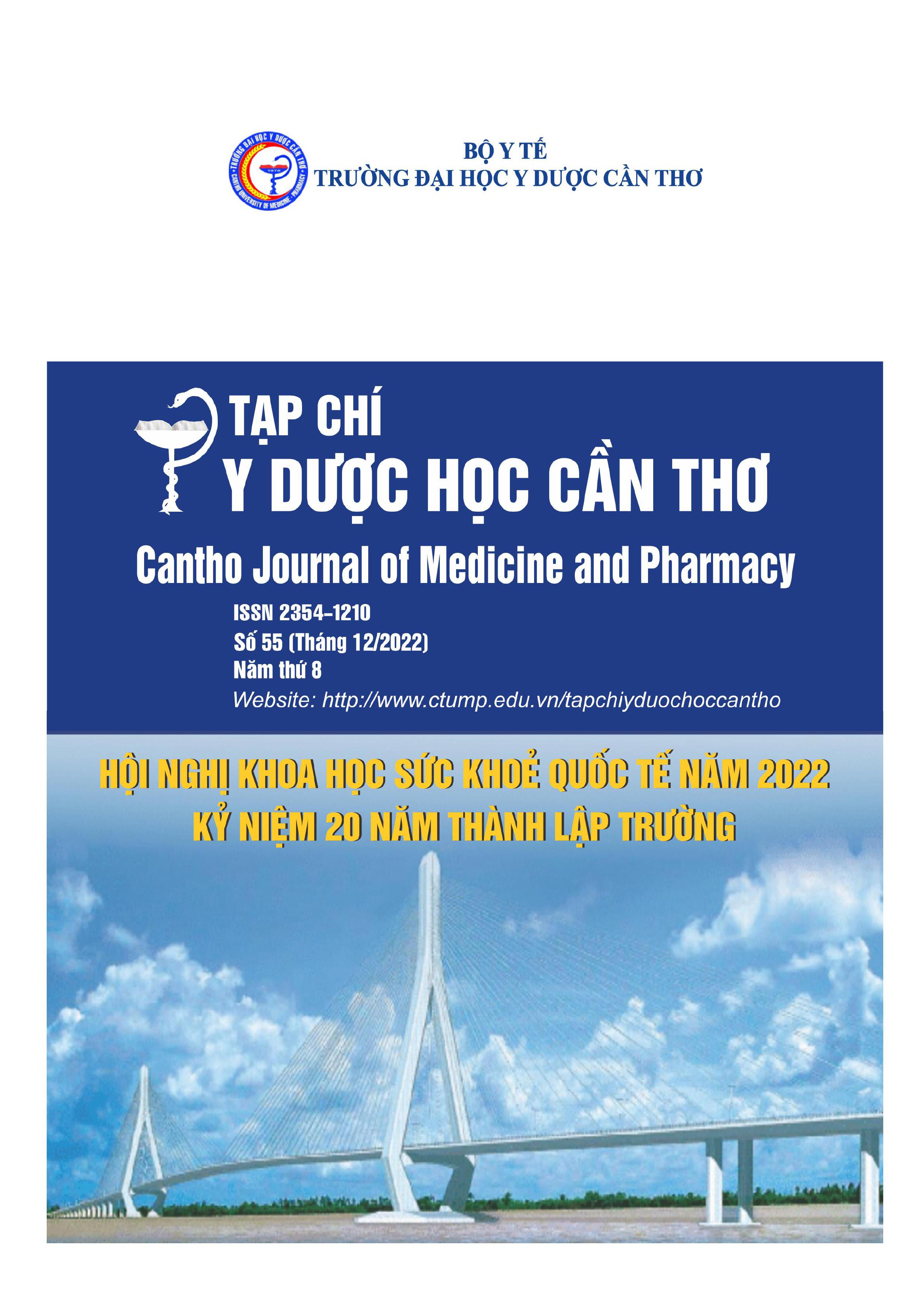EARLY RESULTS OF MINI PERCUTANEOUS NEPHROLITHOTOMY AT XUYEN A HOSPITAL 2021-2022
Main Article Content
Abstract
Background: Mini-PCNL is more and more widely applied, gradually replacing the classic open surgery in the treatment of kidney stones. Objective: The study was conducted to initially evaluate the safety and effectiveness of mini-PCNL at Xuyen A Hospital. Materials and methods: A cross- sectional description of the study. Procedure: Select all patients with kidney stones ≥ 20mm in size at Xuyen A Hospital, meet the sampling criteria, and agree to participate in the study. Before surgery, the reason for admission, characteristics of age, gender, size, location, number of stones according to GSS classification were recorded. During the surgery, the location of the puncture, time of surgery, and complications were recorded. Postoperatively recorded complications, postoperative time, hospital stay. Evaluation of stone clearance after surgery by general abdominal ultrasound and KUB. Results: During 03/2021 to 03/2022, there were 38 cases of kidney stones undergoing mini-PCNL surgery, 20 males - 18 females, the mean age was 52.6±10.2 years (28-77). 84.2% hospitalized for hip pain. 57.9% stones in GSS group 1. The average stone size is 28.5±10.5 mm (20–55). They all puncture at the bottom calyx. The average surgical time was 86.3±14.1 minutes (60-130). No intraoperative complications were recorded. 3 cases of postoperative complications (7.8%). 92.1% had a renal drain removed on postoperative days 2-3. The mean postoperative time was 6.2±2.5 days (3-14). The average length of hospital stay was 12.9±5.4 days (6-29). The rate of early stone clearance after surgery was 57.9%. Conclusion: Mini-PCNL is a minimally invasive method of treating kidney stones that is safe and relatively effective. Can be done if equipped with adequate tools and master the technique.
Article Details
Keywords
Kidney stones, percutaneous nephrolithotomy, mini-PCNL
References
2. Nguyễn Lê Quý Đông (2018), "Đánh giá kết quả phẫu thuật lấy sỏi qua da tư thế nằm ngửa: 12 trường hợp đầu tiên tại bệnh viện Bình Dân", Tạp chí Y học Thành phố Hồ Chí Minh, Tập 22 số 4, tr.258-263.
3. Nguyễn Mạnh Hùng (2018), "Đánh giá kết quả ban đầu lấy sỏi qua da đường hầm nhỏ trong điều trị sỏi thận tại bệnh viện đa khoa tỉnh Bắc Ninh", Tạp chí Y học Thành phố Hồ Chí Minh, Tập 22 số 4, tr.78-83.
4. Tô Minh Hùng (2018), "Đánh giá kết quả bước đầu lấy sỏi thận qua da đường hầm nhỏ dưới hướng dẫn siêu âm tại bệnh viện đa khoa tỉnh Lào Cai", Tạp chí Y học Thành phố Hồ Chí Minh, Tập 22 số 4, tr.31-37.
5. Dương Thế Anh, Đặng Công Bắc và Trần Thị Thu Phương (2018), "Kết quả phẫu thuật nội soi lấy sỏi thận qua da tại Bệnh viện Đa khoa Bình Dương", Tạp chí Y học TP Hồ Chí Minh. Tập 22 số 4, tr.62 - 67.
6. Tô Minh Hùng và các cộng sự. (2018), "Đánh giá kết quả bước đầu lấy sỏi thận qua da đường hầm nhỏ dưới hướng dẫn siêu âm tại Bệnh viện Đa khoa Tỉnh Lào Cai", Tạp chí Y học TP Hồ Chí Minh. Tập 22, số 4, tr.31-37.
7. Ngô Gia Hy (1980), "Sỏi cơ quan niệu", Niệu học, Nhà xuất bản Y học tr. 50 - 146.
8. Lê Ngọc Huy, Trần Văn Hinh và Nguyễn Quang Vinh (2017), "Đánh giá kết quả sớm của phương pháp tán sỏi qua da đường hầm nhỏ điều trị sỏi thận", Tạp chí Y học Việt Nam tập 481, tr.229 - 235.
9. I. Fernstrom and B. Johansson (1976), "Percutaneous pyelolithotomy. A new extraction technique", Scand J Urol Nephrol. 10(3), pp.257-9.
10. D. D. Holst et al. (2021), "Minimally Invasive Percutaneous Nephrolithotomy: Initial North American Experience", J Endourol. 35(5), pp.596-600.
11. Marshall L. Stoller (2020), "Urinary Stone Disease", Smith’s General Urology, pp. 259 -291.
12. Y. Ruhayel et al (2017), "Tract Sizes in Miniaturized Percutaneous Nephrolithotomy: A Systematic Review from the European Association of Urology Urolithiasis Guidelines Panel", Eur Urol. 72(2), pp.220-235.
13. C. Türk et al (2019), "EAU guidelines on Urolithiasis", European Association of Urology Guidelines - 2019 edition, pp.21 - 29.


